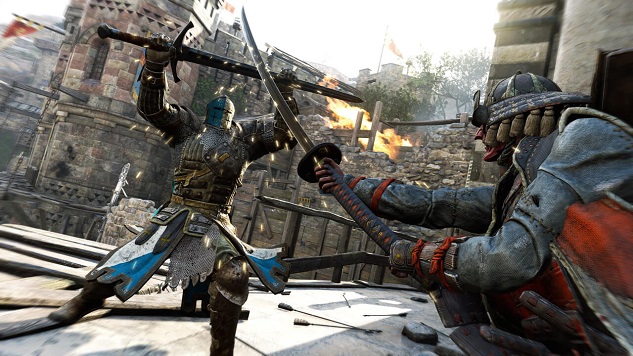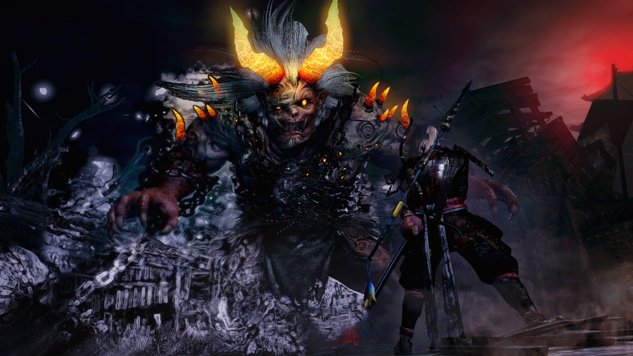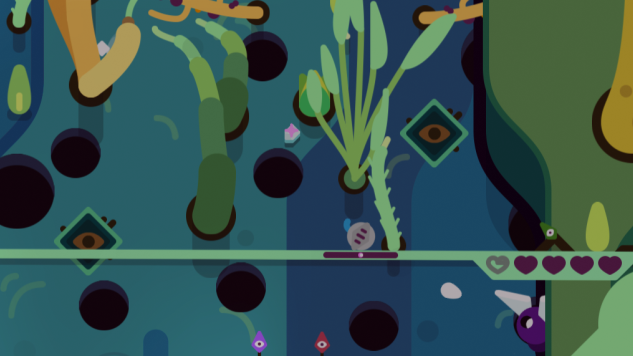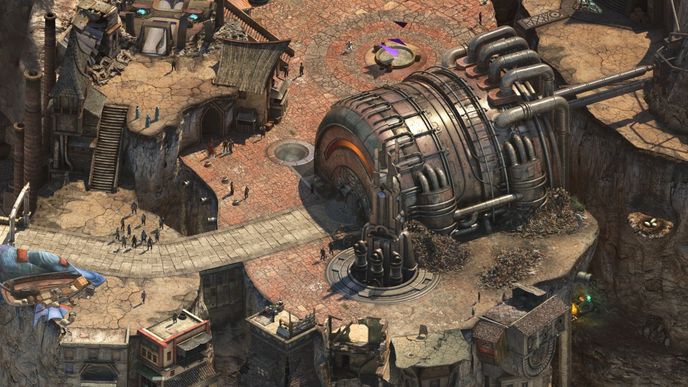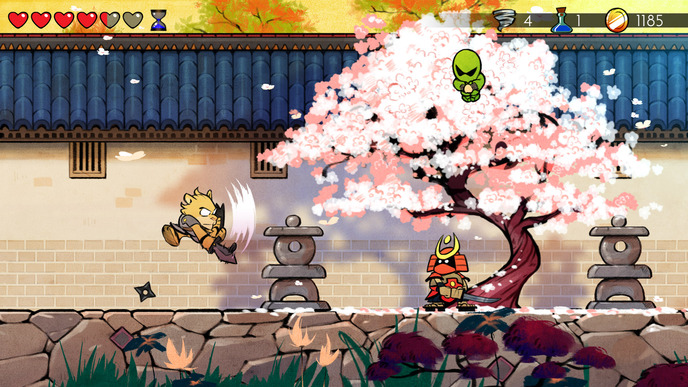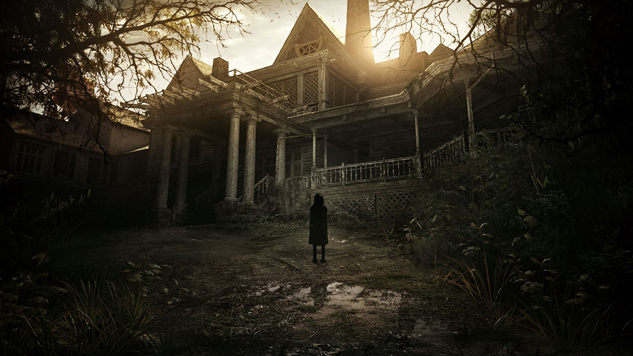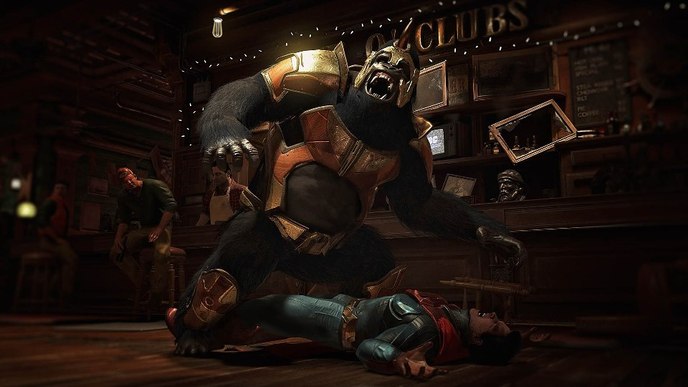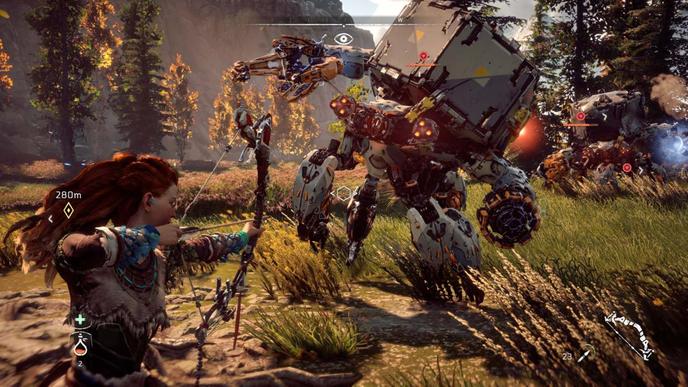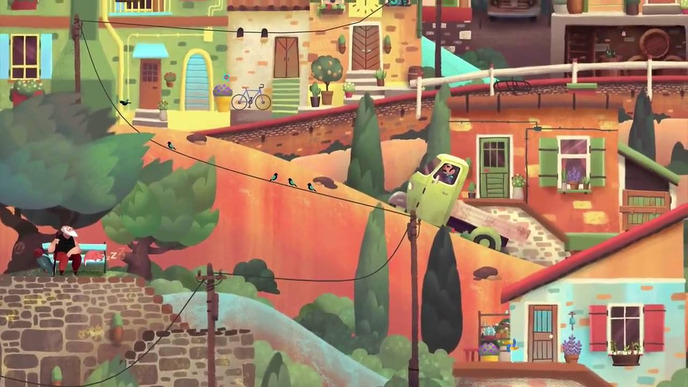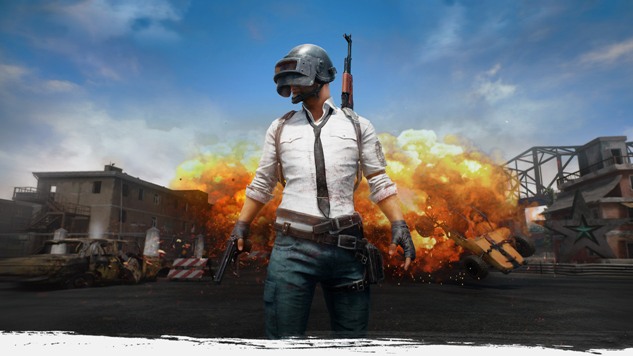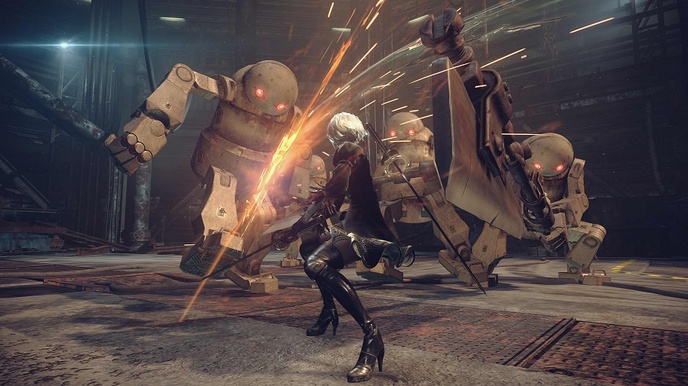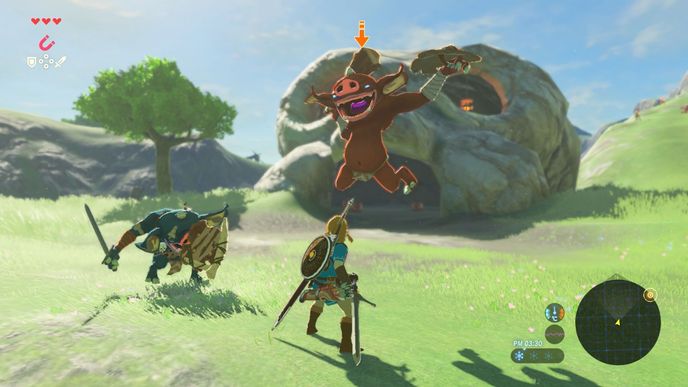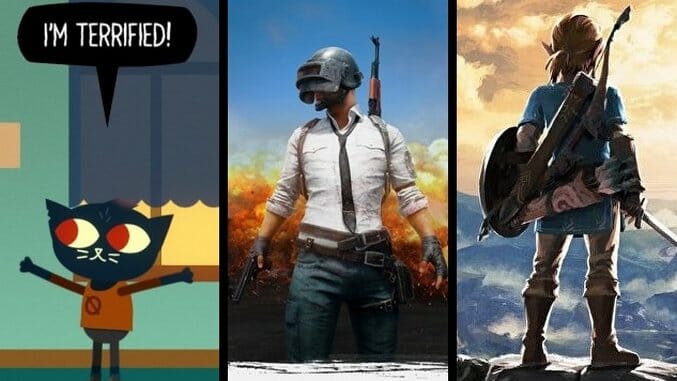
There are no good years for videogames, and no bad years. They’re all just years, with some really good games, some really bad ones, and a bunch of forgettable ones in-between. Those numbers fluctuate from year to year, but there’ll never be a shortage of stuff worth playing if you keep your mind (and wallet) open.
The first half of 2017 saw two games that would top lists like this in almost any year (scroll to the bottom of the next page if you want to spoil yourself), and several more worth seeking out and taking the time to learn. From console to PC to Nintendo’s new home/handheld hybrid, anybody with any system has had at least a handful of great games to play through so far this year. Here’s a look at our favorites so far.
20. For Honor
In an effort to capture the feel of weapon combat, Ubisoft created one of the most intense fighting games this generation, with a wrapper that finds a middle ground between Game of Thrones and Deadliest Warrior. You put yourself in the shoes of three factions—Samurai, Knights and Vikings—and pit the different character classes in each faction against each other. Players clang together swords of all types, offering far more diversity among fighting styles than one would expect from a limited toolset. The combat works on a foundation of roshambo, though trying to play without strategy will not get combatants very far. If a fighter is not reading what their opponent is thinking, then they will quickly find themselves outmatched and outpaced.—Imran Khan
19. Little Nightmares
Tarsier Studios’ Little Nightmares presents us with the third circle of Hell, wrapped into a Tim Burton-esque package comparable to PlayDead’s Limbo or Inside. In Little Nightmares, these nightmares are grotesque and terrifying. Tarsier Studios has crafted a hauntingly provocative story with its use of atmosphere, cultural themes, and fear of the unknown. Little Nightmares sends chills through your spins as you attempt to outrun people much larger—and thus, much faster—than you.—Jeremy Winslow
18. Nioh
[Nioh’s] combat is almost perfect, and I only hesitate to call it perfect because I don’t feel like I’ve mastered it. The Ki Pulse adds a dynamic feel to every battle, and even the simplicity of being able to see an enemy’s stamina bar as well as their health just makes it feel like every battle is a special, one on one encounter. Nioh’s combat feels fair; it feels balanced, and even tough battles feel surmountable.—Adam Cook
17. Tumbleseed
Tumbleseed is all about patience. Predicting the trajectory of the seed and adjusting the angle of the bar requires quick thinking, and steady fingers. The levels change every time the player restarts, and thus the layout cannot be memorized. They can only anticipate what types of enemies and obstacles may lay ahead based on the environment they’re playing in. The mountain has four separate ecosystems as the seed travels upward, and they offer a change of atmospheric pace as the game progresses. At a distance, the limited number of areas would suggest the game is short, but with the repetition the game’s difficulty demands, they’re actually quite long.—Holly Green
16. Torment: Tides of Numenera
It is both a good thing and a bad thing that Torment: Tides of Numenera is novel-like in its ambitions and scope. It’s good in that I can say that the grand narrative payoff for the game is exquisite. It’s bad in that I cannot even give you one single plot point, because if I did I think it would ruin it. I would strongly suggest that you don’t read anything about the game’s story going in. Instead, just pay attention to what everyone tells you, and eventually you get to see these micro and macro story threads build up into a beautiful latticework of narrative. It really is wonderful.—Cameron Kunzelman
15. Wonder Boy: The Dragon’s Trap
In a world of HD rehashing and the seemingly obligatory impulse to re-render old games with the latest in photorealistic graphics tech, it warms my heart to witness the stylistic human touch of Wonder Boy: The Dragon’s Trap. It’s a splendid homage, a playable history exercise, and an unexpected touchpoint for the expressive potential of hand-drawn animation in 2017.—Dan Solberg
14. Rain World

It’s hard not to be charmed by Rain World. Trying to fit it into a traditional game genre (or even suggesting that it is a SomeGame-like) probably does it a disservice. It is wholly unique; that’s excellent in some ways and very, very frustrating in others.Rain World is a beautiful, forward-thinking game that points to a form of game design that I want to see more of. I just wish it made itself a little more accessible.—Cameron Kunzelman
13. Arms

Arms is more than a game about fighting; it is a reminder of genre’s stagnation. Just like a bicep will atrophy in absence of exercise, so too will a category of game (“one-on-one-fighting game”, for example) become stunted by too many me-too attempts. There is both unlimited room and potential for videogames and yet the market is oversaturated with games that rely on stale conventions. Playing Arms feels both intuitive and strange. Stand in front of your TV with a Joy-con in each hand and you feel more connected to your character than in a typical 2D Street Fight. While Arms presents itself as a fighting game, in a way, it has become a sneaky demonstration of the limitations of the genre’s defining features.—Jon Irwin
12. Resident Evil 7
I enjoy a good horror game, and I’ve played through lots of horror titles in a variety of different genres. Nothing has bothered me as much as Resident Evil 7. There is something in the game’s specific combination of ambient sounds, level design, lack of soundtrack, and camera acceleration speed that ended up ticking all of the boxes for making me feel profoundly and disturbingly anxious while playing the game …Resident Evil 7 is so anxiety-inducing, I had to get someone to come play it with me. And I’m glad I did, because the game is probably best experienced in pairs. Its story is told in fits and starts, providing several opportunities to theorize about what is actually going on. Being a first-person horror game, there’s a lot of time spent avoiding enemies and slowly creeping down hallways, and we spent a lot of that time between story beats hollering about what the game’s story was even about at that point in time.—Cameron Kunzelman
11. Gnog
KO_OP’s candy-colored Gnog is as much of an interactive toy box as a game, especially in VR. It situates its puzzles in a series of three-dimensional boxes that have to be poked, prodded, turned and explored as you try to figure out the exact right way to interact with it. With its fanciful, lightly psychedelic images, and its warm electronic score, Gnog is a soothing multimedia treat.—Garrett Martin
10. Injustice 2
Injustice 2 has this beautiful wax and wane that has the exact same pacing as a comic book. Heroes enter scenes, they have goals, villains enter the scene to prevent them from achieving those goals, and then a fight breaks out. The fight resolves, and the process continues. I don’t think anyone would suggest that this is breaking new barriers of storytelling, and the story and the way it is told is in classic comic form, but it works here. I feel like I am playing a comic book, and there’s very few games in the world that scratch that particular itch.—Cameron Kunzelman
9. Horizon Zero Dawn
Guerilla Games’ Horizon Zero Dawn looks like a living nature painting. As the player runs or rides from one settlement to another, the landscape constantly shifts between distinct, gorgeously realized biomes. One minute, it’s a frozen tundra, with sun gleaming off enormous white, snow-covered cliffs, and ground covered in scraggly little bushes and errant branches. The next, it’s an orange sanded desert with towering red clay mesas jutting up into a perfectly clear blue sky. In each, birds and foxes, boar and rabbits frolic. (And, because Zero Dawn is science fiction, herds of robotic bulls, flocks of giant metal birds or a lone, lumbering cybernetic tyrannosaur.) The world is genuinely stunning, a place that wants simply to be soaked in—observed and inhabited. It is our planet in miniature. It’s the globe shrunk down and captured in a videogame console. Sweep the in-game camera around a landscape and it’s almost possible to smell the air or feel the warmth of the sun.—Reid McCarter
8. Old Man’s Journey
Old Man’s Journey is a small, quiet game that you can tell was a work of passion. Sometimes the best way to get someone to listen to you is to whisper. In a just world, this spare kaleidoscope of memories and manipulated hillsides will garner as much attention as bigger games beset with earth-shaking explosions. As we all learn in time, it’s often the smaller chance encounters that make the most impact on us. Especially when we look back.—Jon Irwin
7. Yakuza 0

Yakuza 0’s overarching faithfulness to its era and place in history provides fascinating insight into the time, and its over-the-top cutscenes and climactic fights quickly endeared me to the series. A hefty batch of side-games and engaging, well-paced combat roped me in and sold me on my first ever Yakuza experience, but the vibrancy of its semi-fictional Japan will be what I remember most. Yakuza 0 doubles-down on the series’ signature combination of hyperbolic action and self-aware comedy, while providing an honest window into a major period in recent Japanese history, and does so flawlessly.—Eric Van Allen
6. What Remains of Edith Finch
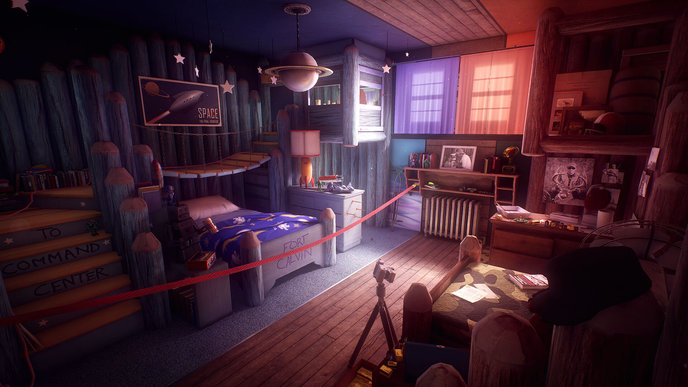
Despite its sometimes too-broad character development and stylistic stumbles, Edith Finch is still a fascinating game—one that has admirably tailor-built its player interactions to fit the varied stories it tells. This is welcome, especially when the inverse approach is so often taken. It’s a game made with real imagination and an honest attempt to capture the unique perspective of its wide range of characters. Given its wide scope, it’s understandable that it’s also a game that succeeds more in concept than execution. Like the subjects of the multi-generational novels whose tradition it embraces, Edith Finch’s individual successes and failures are less important than its overall effect. It’s a story made of stories, and the results of its breadth seem more important than the fine details.—Reid McCarter
5. Persona 5
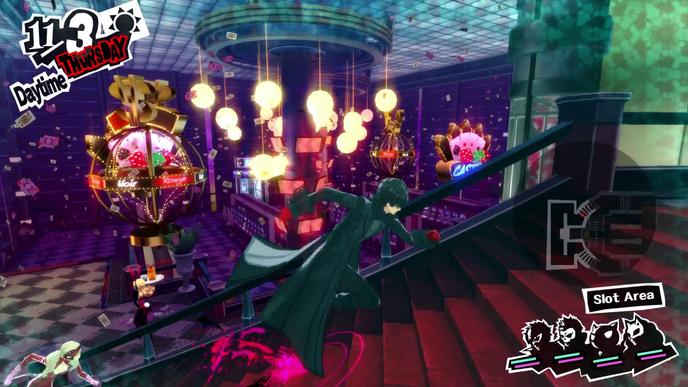
Persona 5 might not be for you—maybe you’ve no love for the anime aesthetic, or maybe the notion of an 80-hour game with no open world isn’t your bag. Maybe you don’t like JRPGs!
But maybe, if you’re anything like me, you’ll spend eighty-three hours with this game over the course of a month and sit there as the credits roll with an empty feeling in your chest, turning your year in Tokyo over and over in your head, thinking of the friends you spent time with and the struggles you endured together. Maybe, despite the unreasonable wealth of games that 2017 has afforded us, you’ll navigate back to the main menu and immediately select “New Game Plus.”—Nate Ewert-Krocker
4. PlayerUnknown’s Battlegrounds
The surprise hit of 2017 has an unwieldy name, but there’s a reason for that: “PlayerUnknown” is actually a person, real name Brendan Greene, a well-known modder who created a Day Z mod based on the Japanese novel and movie Battle Royale. Battlegrounds takes that concept of a shooter where the goal is to eliminate every other player on an increasingly dangerous island and turns it into a far more accessible game. It’s not even officially out yet, but it’s already proven itself to be one of the biggest stories in games this year, and this isn’t just a case of runaway hype. The extreme pressure of Battlegrounds elevates the multiplayer shooter to a previously unknown level of tension and catharsis.—Garrett Martin
3. Night in the Woods
The genius of Night in the Woods is that it grounds its heavy themes not in the worn down characters of Raymond Carver, but in the queer anarchist punks of its lead character’s generation. The game is a rare look at characters who balance all of the burdens above with a love for retro videogames and band practice and drinking in the woods while some blowhard from high school plays acoustic guitar. The game borrows tonally from a variety of sources—everything from the hyperkinetic Scott Pilgrim to the peculiar horror of Haruki Murakami or Blue Velvet back to the blue collar sob stories of Breece D’J Pancake. Plus, did I mention all the characters are animals? Like BoJack Horseman, this aesthetic allows the game to fluctuate rapidly between over-the-top absurdity and soul crushing sadness.—Salvatore Pane
2. Nier: Automata
Nier: Automata is a mature, sophisticated game that avoids the JRPG trap of the narrative, the themes and the play being separate entities. Platinum and Yoko Taro are an expert pair here, harmoniously bringing together dozens of eclectic sources from philosophy to anime to history to real-life war to silly, over-the-top fight sequences into one cohesive whole where not a single part feels unnecessary, and all contribute to the larger message. It is a timely story about our priorities as a society and our continued relevance in an increasingly automated world, told in a clever way that makes meaning out of about four different genres worth of mechanics and yet could still be called elegant. It’s a sharp commentary that could only be done through games, and for now, it is easily the magnum opus of either of its authors.—Michelle Ehrhardt
1. The Legend of Zelda: Breath of the Wild
[Breath of the Wild is] a fresh approach to what Zelda games have striven for since the very beginning. The depth you expect, the open exploration and constant sense of discovery the series is known for, are here in perhaps greater effect than ever before, but with the systems and mechanics that drive the moment-to-moment action heavily overhauled. The result is a Zelda that feels unmistakably like a Zelda, but that also breathes new life into the venerable classic.—Garrett Martin
